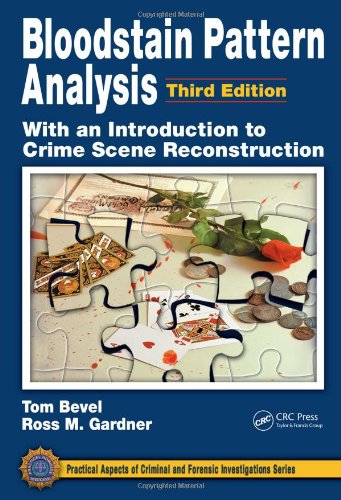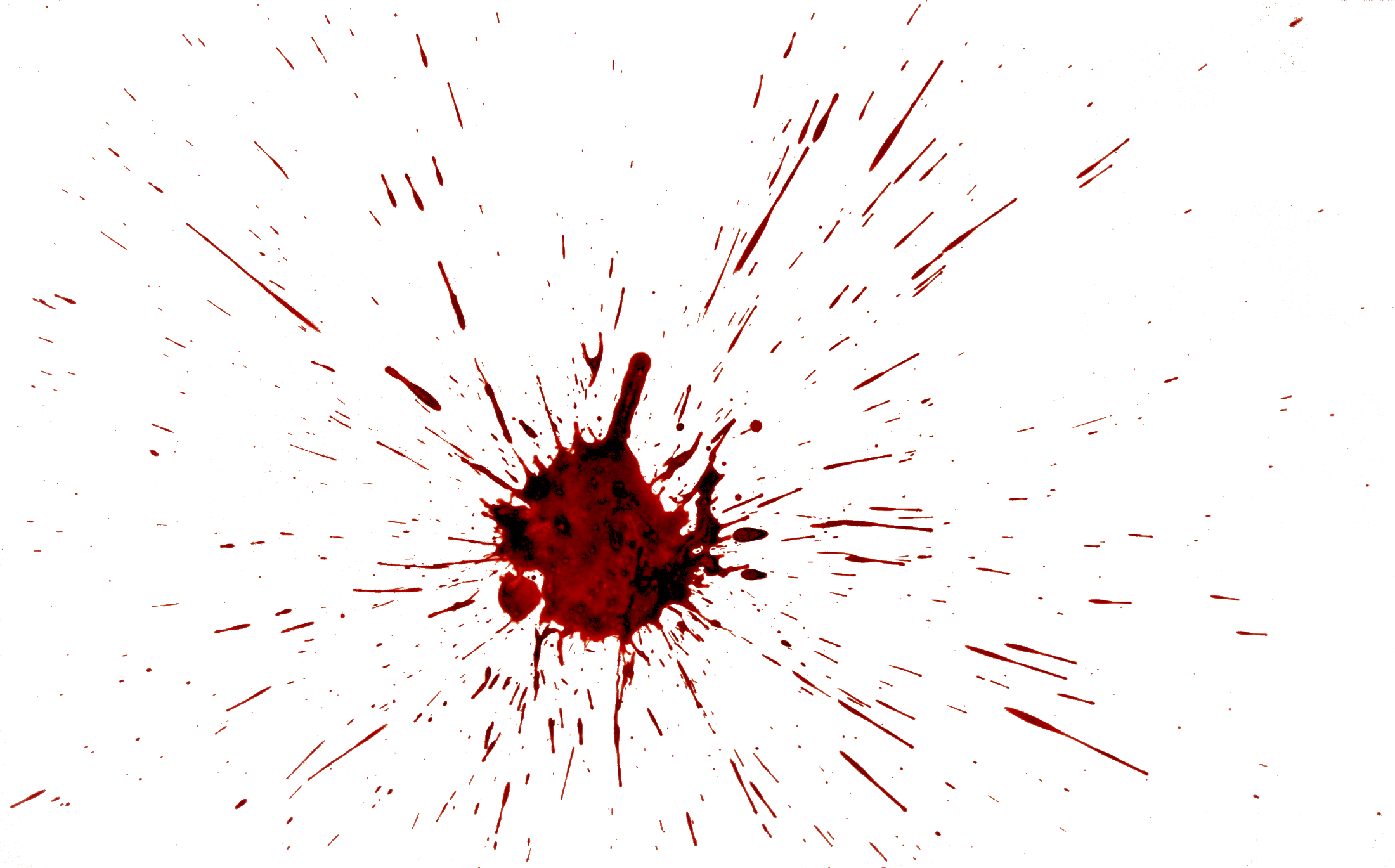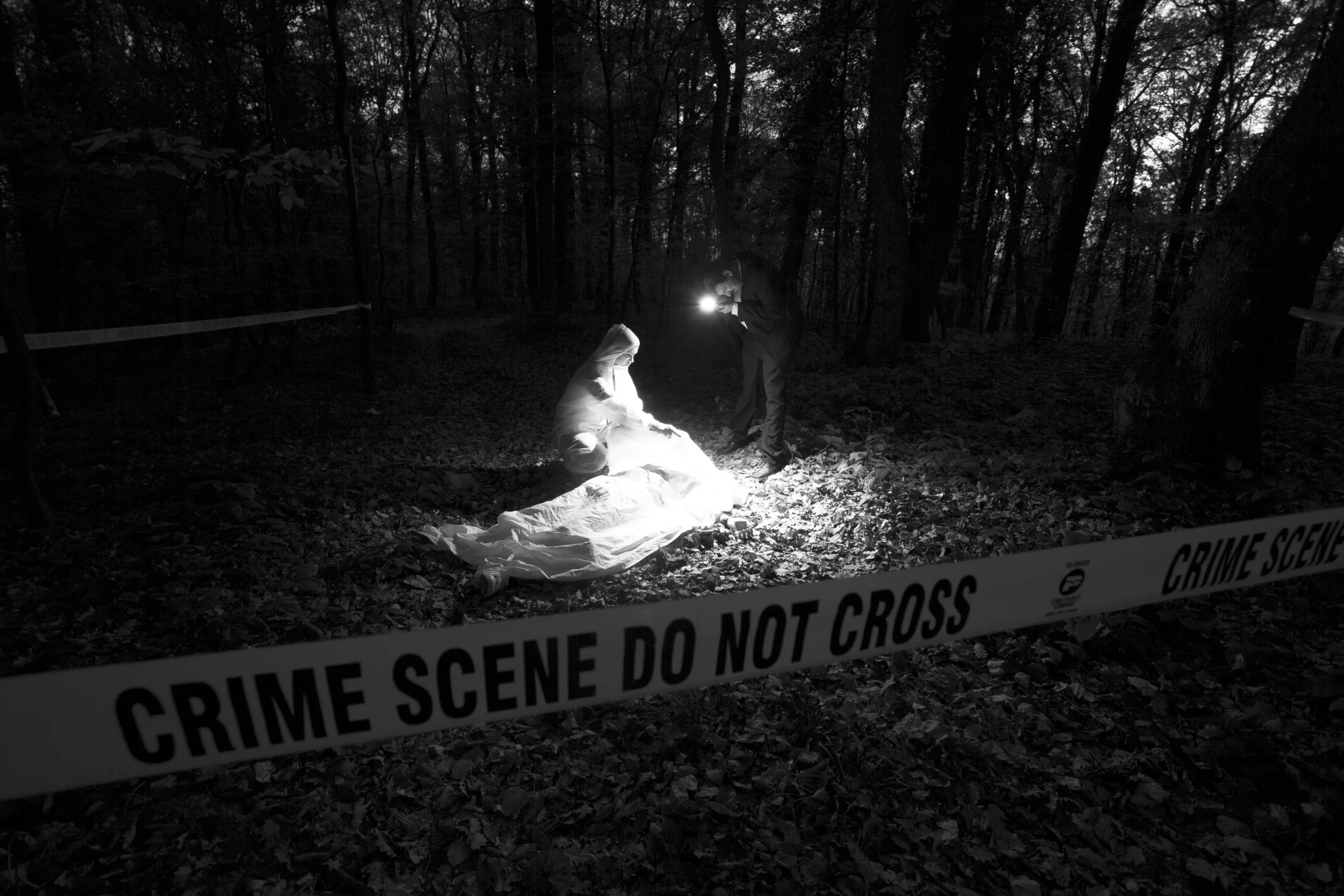R.M. Gardner
The hallmark of the Bevel, Gardner, and Associates Bloodstain Pattern Analysis training program is its reliance on articulated physical characteristics for each of the various patterns. These characteristics (taxon), when present allow the analyst to know with certainty the nature of the general mechanism that created the pattern. This system of classification, known as the Taxonomic Classification system was first described in the 3rd Edition of our book Bloodstain Pattern Analysis: With an Introduction to Crime Scene Reconstruction. Why does bloodstain pattern analysis (BPA) require such a classification system?
Science is the observation, experimental investigation and theoretical explanation of a given phenomena. A BPA analyst is concerned with a specific form of phenomena - bloodletting phenomena. Any conclusion (which is a theoretical explanation of “how” a particular bloodstain came to be in the crime scene) requires understanding first the general mechanism that produced it and then considering that mechanism within the unique scene context as found, or as Haag described it - it’s “limited universe”. It is only after consideration of the kind of pattern present, where the pattern is and this unique scene context that any viable explanation of the stain is possible. But comparative science demands criteria for comparison; known conditions/characteristics that a given unknown sample can be compared against. Astronomers classify stars based on temperature, luminosity, chemical composition and size. Chemists classify matter based on the specific atoms found within. Biologists classify animals using specific physical characteristics. If it is science, then unknowns are compared against specific known properties. Anything less is a guess and highly subjective.
Bloodstain pattern analysts routinely describe their effort by stating they can define the nature of the creation mechanism based on the number, dispersion, shape and size of the bloodstains present. That statement is very true and is the theoretical foundation of the discipline. The theory of Bloodstain Pattern Analysis is that blood as a fluid responds to forces in a predictable manner. What are these forces/mechanisms? These forces/mechanisms are not crime scene based. One cannot look at the pattern alone (without context) and define whether it was created by a knife being swung, a gunshot, or a victim being struck by a 2X4. What the pattern tells us is the nature of the general manner of disruption of the blood mass. The basic mechanisms we can differentiate in BPA include:
Blood dispersed from a point source. (Impact spatter, Expiration, Mist)
Blood dispersed from an object in motion. (Cast-off)
Blood dispersed in streaming ejections. (Spurts and Gushes)
Blood dispersed by gravity alone. (Drip, Drip Trails, Blood into Blood)
Accumulations of blood. (Pools, Saturations, Flows)
Blood dispersed by contact. (Smears, Wipes, Swipes and Pattern Transfers)
Within each of these general mechanisms there are characteristics that may allow further differentiation of that particular mechanism. For example finding vacuoles or mucous strands may allow the analyst to recognize that a radiating spatter pattern is in fact associated to some action in which blood was dispersed from an airway.
Once the analyst understands this general mechanism, then within the given scene context they evaluate viable source events that were occurring in that scene. There may be several possible source events. For example an impact pattern might be associated with a gunshot wound, a blunt force wound or even breathing by the victim. Lacking some of the more defined characteristics for Mist or Expiration, there may be no way for the analyst to exclude any of these as potential source events.
Without this first step, the recognition of the general mechanism of disruption, any analyst attempting to explain the stain is functionally blind. They have no ability to exclude or include anything.
Unfortunately, some BPA analysts explain bloodstain phenomena based primarily on context. They operate without specific criteria for comparison and classification. The stain is whatever they decide it is based on the context in which it is found and such decisions may well be influenced by either contextual and/or confirmation bias. A common BPA rebuttal response heard in court from such analysts’ is: “That stain could be anything”. As they operate without specific comparative criteria, in their minds the stain literally could be anything based on the way one chose to interpret the context.
Although some stains are certainly ambiguous and lack sufficient characteristics that would allow classification, this response is more often presented for stains that clearly CANNOT be “anything”. Keep in mind BPA evidence is a form of class characteristic evidence. Our ability to offer any probative information to the court is based primarily on our ability to exclude certain things as having produced the stain. If we are lucky, we may be able to exclude to the point of a single potential scene explanation, but even when we can’t exclude to that level we typically are able to exclude to some level because different mechanisms do produce different types of patterns. Were it actually true that any stain can be anything, then simply put BPA would not be a valid discipline, but that statement is false and a total misrepresentation of the discipline. Pattern diversity is the most basic principle guiding the BPA analyst, but the nature of that diversity must be clearly defined.
This lack of articulated criteria also manifests problems for competent analysts, who based on experimentation during their BPA training recognize this diversity, but are unable to articulate specifics to the court when pressed for “why” a stain is whatever it is. Recognition is not enough, the analyst must be able to put in words and point to that which they compared.
Just as important to this issue is the fact that there are many ambiguous patterns found in real crime scenes. Patterns where the characteristics are difficult to distinguish, if present at all. Any analyst, no matter what their level of experience, will encounter such stains. When they do they must have a means of comparison that will allow them to objectively exclude as effectively as is possible. As we teach in classes, the various classification systems all create pretty little boxes to put our stains in, but not all stains fit neatly into those boxes. To remain objective, exclusion of a given source event must have a clear foundation.
Taxon (specific physical characteristics) must be the primary basis of any objective analysis. Context is certainly in play in the methodology step of classifying a pattern, but context driven classification without taxon is fraught with subjectivity. Without specifics to look for and compare the unknown stain against, no conclusion can be claimed as objective. The taxon must be written, understood and routinely utilized in the initial decision making of the BPA analyst. The BGA Taxonomic classification system defined an initial set of articulated taxon for each of the patterns, and although the specific words we use to describe these characteristics can certainly be refined, the characteristic itself is real. Bloodstains and their associated taxon are reproducible phenomena. The various characteristics we describe can be seen, can be pointed to and they allow for objective exclusion of certain actions as a source of a stain. We also believe that some of the taxon can be quantified with further research (e.g., what is the minimum angular deviation necessary between individual spatter that would define a pattern as linear versus radiating?). Our classification system can always be refined and made better, but it is a valid, criteria based system. One effective tool that developed from this system is the BGA Classification Decision Map. It is important to recognize the Taxonomy and the Decision Map are not one and the same. In future blogs I’ll discuss the role of the decision map as a tool for the BPA analyst.
R.M. Gardner
The bottom line is that with the continued scrutiny of the legal profession into how forensic analysts approach their task, every competent BPA analyst should ensure that they know, recognize and utilize criteria based approaches in defining how a stain came to be. Call them what you will, taxon, typology, or classification criteria, they are the objective basis for everything we do in bloodstain pattern analysis. The days of analysts taking the stand and making some claim as to the stain type and then offering as foundation “because I said so” are through. That type of analysis has led to significant subjectivity in conclusions and despite BPA being a scientific discipline based on simple fluid dynamics such approaches have opened BPA to attack. It is time science returned to the forefront in bloodstain pattern analysis and a criteria based approach is the only way that will happen.




